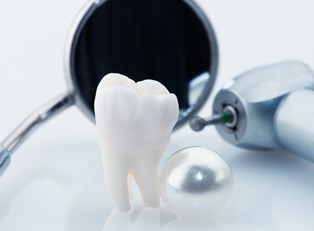Wisdom teeth are a set of molars that emerge near the back of the mouth. However, when this process does not go as it should, they run the risk of becoming impacted. A tooth is considered impacted when it is prevented from emerging normally by other teeth that are already fully developed. This keeps the tooth partially trapped beneath the gum line and may cause it to grow at an unusual angle.
While this is typically not a life-threatening condition, it is one that should be addressed as soon as possible, since it can cause oral problems for patients down the road. Here is a look at what exactly it means for wisdom teeth to be impacted.
Causes of Impacted Wisdom Teeth
Impacted wisdom teeth occur when there is not enough room in the jaw for them to develop normally. While any teeth can potentially be impacted, wisdom teeth are the most likely since they are the last set to develop.
The size of a person’s jaw is largely determined by genetics, but there isn’t a reliable way to determine whether or not there will be enough room in the mouth for wisdom teeth to emerge as they’re supposed to.
Signs of Impacted Wisdom Teeth
For many people, there will be no signs associated with their impacted wisdom teeth—it’s estimated that only about 12% of people with them will actually experience any symptoms.
When signs do occur, the most common is pain near the area where the teeth are attempting to emerge. In addition to this discomfort, bleeding and swelling may also be a problem for some patients.
There may also be some secondary symptoms associated with impacted wisdom teeth, such as bad breath. Signs like these occur because impaction can cause the development of periodontitis—an inflammatory gum disease.
Risks of Impacted Wisdom Teeth
Even if a patient experiences no symptoms with his or her impacted wisdom teeth, they can still pose health risks. The most common of these is infection.
While an infection will inevitably make itself known, it’s entirely possible for a person to go years without realizing there’s a problem. If left untreated, this condition can lead to serious conditions that may seem unrelated to oral care, such as heart disease or blood clots. While the link between oral infections and the heart is still not entirely understood, there is some evidence to support the idea that the infection-causing bacteria in the gums can dislodge and enter the bloodstream.
Diagnosis of Impacted Wisdom Teeth
If the wisdom teeth have emerged enough, a dentist may be able to predict impaction with a visual assessment alone. This determination must take into account the angle and depth of the teeth as well as the age of the patient.
When wisdom teeth cannot be visually assessed, dental X-rays may be necessary. Typically, dentists will recommend that patients be screened every three years from ages 16 to 25. To figure out their risk for impaction, the length of the wisdom teeth are compared to the available space in the jaw.
Treatment of Impacted Wisdom Teeth
Removing impacted wisdom teeth is the most common method of treatment. This procedure is mild enough that it can normally be performed in the dentist’s office, and it only has a recovery period of a few days.
To begin, the surrounding area is numbed with a local anesthetic. Following this, the dentist will open the gum tissue that is surrounding the impacted tooth. Next, he or she will disconnect the tooth from the jawbone by severing the tissue connecting the two. Finally, after the wisdom tooth has been removed, the dentist will repair the area by stitching the gums back together.




